A version of this review was earlier published in the Asian Image newspaper. Additional information has been added to the review for the Deoband.org and Basair.net readership – Ismaeel.
The story of Islam in Britain as told nowadays would always be incomplete without mention of the so-called ‘Shaykh al-Islam of the British Isles’ Abdullah Quilliam (d. 1932), the Victorian-era solicitor who converted to Islam and founded and presided over the Liverpool Muslim Institute.
As Muslims began settling in the UK in large numbers following World War Two, there was a time when we knew very little if anything about Quilliam and the Liverpool Muslim community. This unknown history, however, began to unravel itself bit by bit as historians and academics began piecing together Quilliam’s life through archives, his personal papers and, more importantly, past issues of his periodical, The Crescent.
Aside from being the main source of what we know today about this fledgling community situated at the second most important port of the mightiest empire of the day, The Crescent was at that time Quilliam’s main vehicle for raising his profile and that of his community and institute. It made him famous and drew funds from across the globe. In addition to a readership in Britain, thousands of copies were regularly sent abroad to subscribers across the world, from the Americas to the Malay Archipelago and as far south as Cape Town.
As a result, Quilliam became well known throughout the Islamic world. Eccentric, flamboyant and peculiar is how he is perceived. Those who have studied his life and his congregation often mention that there is still much to discover about the Brit who converted to Islam in Morocco in the late 1800s. To, therefore, come across a Muslim account of Quilliam and his community written by someone who was Quilliam’s contemporary is surely a novelty.
Having heard of the community and Quilliam, Yusuf Samih Asmay (d.1942), an Ottoman intellectual, travel writer and journalist who lived in Cairo, spent over a month in Liverpool observing the institute and interviewing its leader and the people associated with it. On his return to Egypt, he corresponded with the people he met and wrote a unique and intriguing eyewitness account of Britain’s first mosque community in the Ottoman language. What makes Asmay’s account specifically stand out is that he presents Quilliam and his institute in a way that is at odds with the image depicted in The Crescent.
Asmay does not take any prisoners. He criticises both Quilliam and the Liverpool Muslim Institute. His main denunciations revolve around how religious services are unorthodox and at odds with Sunni Islam (there seems to be a mixing of Islamic practices with Anglican Christianity). According to Asmay, prayers were conducted not at the appointed hours or in the necessary Islamic format. Ablutions and prescribed purity rituals seem to be ignored or not performed in the proper way, and Asmay laments “if only the brothers and sisters-in-faith in Liverpool could study the Qur’an and … a concise manual of Islamic faith, worship and ethics under a religious scholar one evening a week at this school it would be of great benefit.” This was something that fell on deaf ears with Asmay suggesting this himself as did other well-intentioned people.
Asmay also criticises how anti-Christian polemics are often the topic of discussions at the institute, something that he considers unwise in a deeply Christian Victorian society. He further observes that the private Islamic school and museum at the Liverpool Muslim Institute are not as grand as one may be led to believe going by The Crescent.
In relation to the museum housed at the Liverpool Muslim Institute, he amusingly writes that “the contents of the room are no more than a few fish and cat skeletons, some stuffed birds and a few stones and ores of different minerals and suchlike. There are antique shops that sell similar items on Manchester Street in Liverpool and if you are familiar with the contents of a single display cabinet in these shops, then it would suffice to describe the objects in this room. To have the audacity to name a room that lacks historical or scientific objects a museum can only be explained by Quilliam being an attorney.” The reference to the cat skeletons really caught my eye. Though not mentioned by the editors, I would not be surprised if the cat skeletons that Asmay observed were one of the estimated 180,000 mummified Egyptian cats that were sold at auction at Liverpool docks in 1890. Almost all were crushed and used for manure, except for a few that were saved and are housed today at Liverpool’s World Museum.
Asmay also reproduces an Ottoman translation of an advertisement that is regularly printed in The Crescent about the Liverpool Muslim Institute and its activities. He then comments, “Muslims in general in Liverpool are not members of the elementary school that is named an institute, which in reality is a small room where Mr. Quilliam’s children study. The mosque is not open for visitors every day let alone for worship. Saying [we are holding] Friday prayers is only lip-service. A lecture room and library has not come into existence. The [desultory] state of the museum has been mentioned above. The day school is an embellishment as is the case with the Friday prayers.”
He then amusingly adds, “Writing that there are evening classes for Oriental languages is like putting one zero in front of another. Alas, how much do the events of our times suffer from the pens of English journalists and the speeches of their lawyers? They have the ability and power to make a grain as small as a speck appear as big as a ladle. With our brother Mr. Quilliam being both a lawyer and a journalist, is it hard to imagine what he might be capable of, if we give it a little consideration?”
The publicity that The Crescent generated attracted funds from across the Muslim world. In relation to this, Asmay alleges financial irregularities and calls for the need to improve governance to oversee the donations that poured in. He also stresses the need for regulating the institute as a waqf or Islamic endowment. In the context of the improper use of funds, Asmay provides a profile of Mawlana Barakatullah Bhopali [1]It would seem Mawlana Barakatullah’s involvement with the Liverpool Muslim Institute was not one of his proudest moments. He is remembered today as a prominent Indian revolutionary, delivering fiery speeches and revolutionary writings in newspapers calling for India’s independence. While in Liverpool, Asmay reached out to the mawlana in relation to a host of problems at the institute from finance issues to lack of authentic Islamic instruction, something that might have struck a guilty note … Continue reading (d.1927), an Indian who Asmay says Quilliam employed as a secretary due to his proficiency in Arabic, Persian and Urdu to write letters to Muslim rulers seeking financial assistance. Asmay was clearly unimpressed by Bhopali and writes that “his additional job is to be introduced as the Mufti of Liverpool to Muslims from the Orient who come to visit the city.”
What is even more damning are the questions that Asmay raises around Quilliam’s character, providing details that I certainly have never come across before. He also dubs The Crescent as a tool for propaganda and interestingly mentions that Quilliam and the Liverpool Muslim Institute is a British imperial project with some sort of colonial goal in mind to undermine pan-Islamic solidarity. As the editors mention in their introduction, for some the Liverpool Muslim Institute was a “political attempt to undermine Islamic unity through propaganda about an English mosque with Muslim converts to buttress Britain’s imperial authority” and “to counter Islam as a unifying anti-colonial force and to assimilate Muslims as imperial subjects.”
Interestingly, the editors’ also mention that Quilliam’s “designation as ‘Sheikh-ul-Islam of the British Isles’ came about through nomination” and election at a Liverpool Muslim Institute meeting with “no hard evidence to date that the Ottomans ever formally recognised the title or that its officials ever used the title in connection to Quilliam.”
Asmay’s book caused great controversy among Liverpool’s Muslims and had the potential to severely damage Quilliam and his institute. For reasons that are unclear, the Ottomans banned the book in 1898 following a private audience between Quilliam and Sultan Abdul Hamid II. This clearly shows that Quilliam had reach into the highest echelons of power within the Sublime Port. It is normally assumed that he enjoyed these relations because of a sense of common Islamic brotherhood. Is this, however, the case or is there something else sinister such as Quilliam’s Freemason links?
Though not mentioned in Asmay’s book or the editors’ introduction, notes and appendixes, it is now widely understood that Quilliam was a Freemason and member of several lodges before and after his conversion. He also enjoyed close associations with the Grand Master and Mayor of Liverpool John Houlding who was even awarded the Order of the Imtiyaz on the instructions of Sultan Abdul Hamid II. Several prominent Ottoman statesmen and dignitaries were masons who played crucial roles in palace politics, intrigue and kingmaking.
What the nature of Quilliam’s ties to Freemasonry in Constantinople was is unclear. What we do, however, know is that Quilliam suddenly left Liverpool in 1908 for Turkey and then returned to the UK under an alias in 1914. It is assumed that he was running away in advance of being struck off the Roll of Solicitors for unprofessional conduct as a solicitor. However, Quilliam’s arrival in Turkey coincided with the time when the Committee of Union and Progress (or the Young Turks), a secretive revolutionary organisation that had deep ties to Freemasonry, was forcing Abdul Hamid to reinstate the Young Turk constitution that eventually led to his deposition in 1909. Did Quilliam play a role in the political changes that took place in Turkey during that period and did his links to Freemasonry enable this? We know he assumed different aliases. Could it be that he assumed another identity to play a role in Constantinople and if so what was this role? Perhaps there is an Ottoman record chronicling this. These are questions that remain unanswered and hopefully as time passes, we can learn more.
Returning to Asmay’s book, this English translation has once more allowed this book to see the light of day. It includes a brilliantly written detailed introduction by the editors, followed by the actual book with meticulous notes and then an appendix consisting of brief biographies of key individuals mentioned within the text and other relevant information. Though it does not do any favours to Quilliam and the Liverpool Muslim Institute, it is an excellent contribution that enriches our understanding of the early days of Islam in Britain.
Book details
Title: Islam in Victorian Liverpool
Author: Yusuf Samih Asmay
Translated, notes and introduction: Yahya Birt, Riordan Macnamara and Münire Zeyneb Maksudoğlu
Publisher: Claritas Books
References
| 1 | It would seem Mawlana Barakatullah’s involvement with the Liverpool Muslim Institute was not one of his proudest moments. He is remembered today as a prominent Indian revolutionary, delivering fiery speeches and revolutionary writings in newspapers calling for India’s independence. While in Liverpool, Asmay reached out to the mawlana in relation to a host of problems at the institute from finance issues to lack of authentic Islamic instruction, something that might have struck a guilty note and prompted him to separate from the Liverpool Muslim Institute. Many years later, Mawlana Barakatullah appears in Afghanistan where he took on the role of Prime Minister of the first Provisional Government of India, which served as the Indian Government in exile during World War I and was presided over by Raja Mahendra Pratap Singh (d.1979). The government in exile was established by the Indian Independence Committee which was a broad coalition of Indian freedom fighters representing Muslims and non-Muslims of various shades and colours, including the then head lecturer at Dar al-‘Ulum Deoband, Shaykh al-Hind Mawlana Mahmud Hasan Deobandi (d.1920) and Mawlana Obaydullah Sindhi (d.1944). Mawlana Barakatullah died in San Francisco and was buried at Sacramento City Cemetery, California. |
|---|
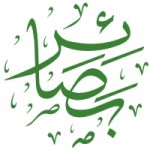

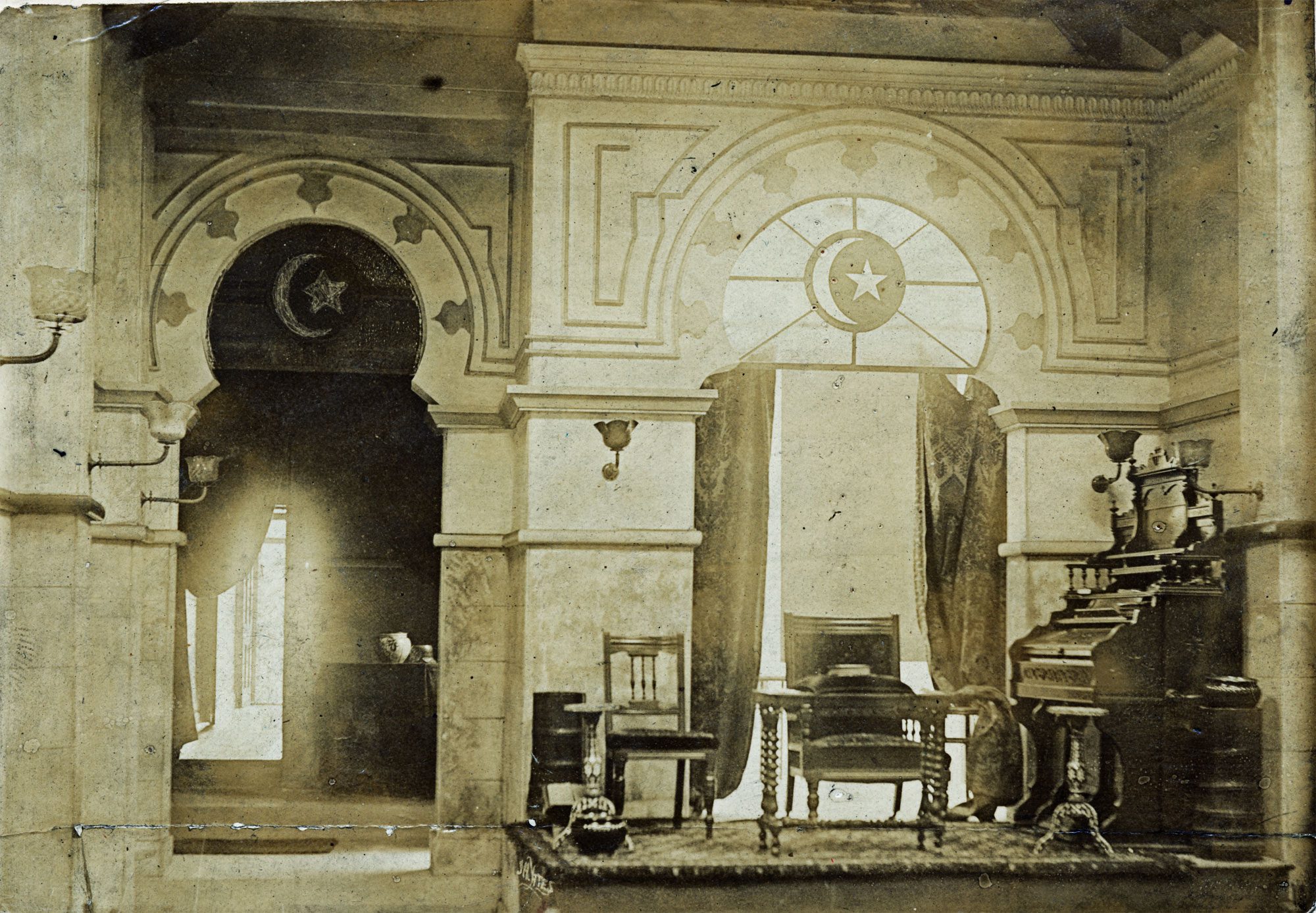
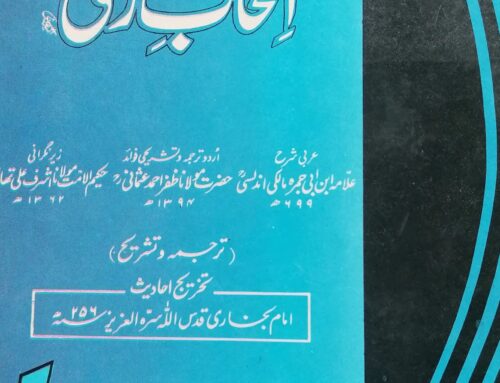
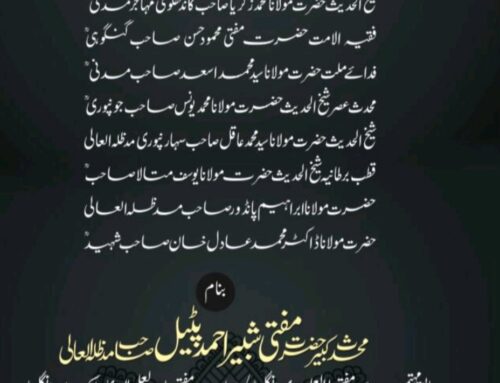
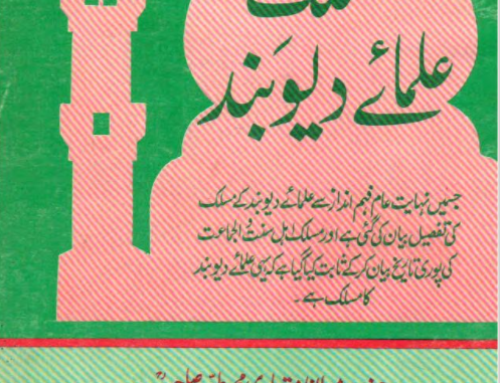
As-salamu alaykum wa rahmatullah wa barakatuhu,
May Allah reward you for your positive appreciation of the book. There a few points made towards the end that are not factually substantiated, so far as our current knowledge of Quilliam’s life goes. I will quote a line from the piece above and then add a comment underneath each one that is quoted.
“Though not mentioned in Asmay’s book or the editors’ introduction, notes and appendixes, it is now widely understood that Quilliam was a Freemason and member of several lodges before and after his conversion.”
— Quilliam was associated with Fringe Freemasonry, specifically John Yarker. This tends to be more racially and religiously inclusive and more liberal and harboured some anti-imperialist elements. For details see the scholarship of Patrick D. Bowen.
“He also enjoyed close associations with the Grand Master and Mayor of Liverpool John Houlding who was even awarded the Order of the Imtiyaz on the instructions of Sultan Abdul Hamid II.”
— This award to John Houlding was at the instigation of Quilliam himself, and was one way that Yildiz Palace sought to bolster Quilliam’s position within his local political context of Liverpool. Houlding and Quilliam were associated through philanthropy, trade unionism and politics, see Y. Birt’s article on the Quilliams and Popular Conservatism in Liverpool.
“Several prominent Ottoman statesmen and dignitaries were masons who played crucial roles in palace politics, intrigue and kingmaking.
What the nature of Quilliam’s ties to Freemasonry in Constantinople was is unclear. What we do, however, know is that Quilliam suddenly left Liverpool in 1908 for Turkey and then returned to the UK under an alias in 1914.”
— Quilliam returned in 1909 or even earlier. See the scholarship of Ron Geaves, Jamie Gilham and Matt Sharp. Also see forthcoming Geaves and Birt, Introduction to the Collected Poetry of Abdullah Quilliam.
“It is assumed that he was running away in advance of being struck off the Roll of Solicitors for unprofessional conduct as a solicitor. However, Quilliam’s arrival in Turkey coincided with the time when the Committee of Union and Progress (or the Young Turks), a secretive revolutionary organisation that had deep ties to Freemasonry, was forcing Abdul Hamid to reinstate the Young Turk constitution that eventually led to his deposition in 1909. Did Quilliam play a role in the political changes that took place in Turkey during that period and did his links to Freemasonry enable this? We know he assumed different aliases. Could it be that he assumed another identity to play a role in Constantinople and if so what was this role? Perhaps there is an Ottoman record chronicling this. These are questions that remain unanswered and hopefully as time passes, we can learn more.”
— Matt Sharp’s PhD looks at Quilliam in the Ottoman archives among other things. There are no records for his 1908 visit, unlike all his other visits. Still, there is no evidence that Quilliam was ever pro-Young Turk at the expense of Abdul Hamid II. In 1916, he recalled the caliph his greatest patron and supporter. Earlier, in 1909, he wrote an op-ed in the New York Times defending the caliph and distancing himself from the Young Turks, and this was after the Revolution.
I am not sure why you are going out of your way to downplay Quilliam’s membership in Freemasonry by describing him as simply “associated” with it and in only a “fringe” capacity. I would have thought that someone like yourself who have studied the life of Quilliam to know that he was not just a member of fringe orders. His membership records were also found in registers released by the United Grand Lodge of England. He was also a member of the Chapter and the Mark and the Royal Ark Marriner degrees. These orders are as mainstream as you can get and by no stretch of the imagination are “fringe”.
Most of the people who became Muslims in the Liverpool mosque, were also initiated into Freemasonry by Quilliam, even his own two sons. I think Sultan Abdul Hamid would have had nothing to do with Quilliam if only he knew that Quilliam was a mason.
On one hand, Quilliam was telling people in England that they had to follow his new version of Islam like women kissing men after prayer in his mosque but on the other hand, he was projecting mainstream Islam overseas through his publication, the Crescent. He wanted to become a central reference for Islam to the entire world but at the same time, he was in a secret brotherhood with Satan worshipers like Aleistar Crowley. Yes, Crowley, “the most wicked man in history” who is responsible for spreading Satanic ideas and Satanic worship all around the world was in a close fraternity and brotherhood with Quilliam. Quilliam was master of ceremony in meetings while Crowley took notes. Here is an excerpt from minutes of a 1913 meetings: “Bro W. Henry Quilliam called the Convocation to order, and called upon Brother Crowley, to read the summons calling this Convocation. This was duly done and a copy of such summons so there read is set out in extenso in the minutes hereinafter written. On the motion of Bro W. Henry Quilliam, seconded by Bro. Aleister Crowley…” (In Memoriam-John Yarker. p.8-9).
Note the repeated use of the word “brother” between Quilliam and the man who liked to be known as the “Beast666” (Aleister Crowley). This is documented proof that Quilliam was in a close and secret brotherhood with a Satan worshiper who is idealised by Satanists all around the world even today. How can Muslims accept this kind of person to be their religious forbearer and spiritual ancestor? I think it is high time that Muslims in general and the white revert Muslim community in particular give up this incessant search for a historic white shaikhul Islam and accept the fact that when it comes to skin, all Muslims must be colour blind and taqwa is always of the utmost importance.